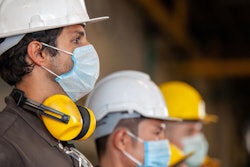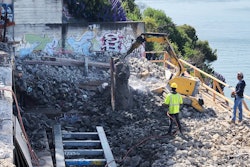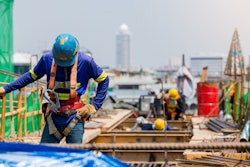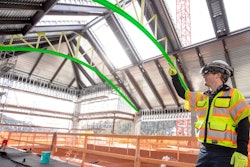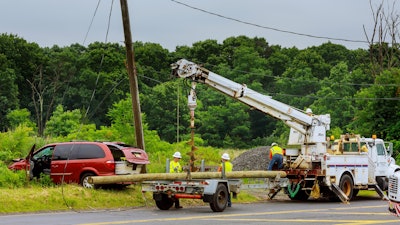
Car accidents are stressful events. Even minor fender benders can rattle seasoned drivers. Suddenly, you’re the center of attention, and bystanders, responding police officers and others are looking at you—even if you weren’t at fault. And when you are involved in an accident in a company vehicle, the pressure can feel even more intense.
However, it’s important that you respond correctly to a crisis—large or small—since how you react can affect the post-incident repercussions. Construction company owners can take some of the stress out of auto accidents by defining a set of steps that employees should take following an incident and ensuring that everyone understands those actions.
Vicarious Liability: An Important Concept
The laws regarding company vehicle accidents vary from state to state. But certain core principles tend to be common to most or all locations. One of the most important is the concept of vicarious liability. It means that the construction company that owns or leases and insures a vehicle is typically responsible for the results of an accident rather than the employee who is driving the vehicle.
Businesses should explain this concept to any employee who they authorize to operate a company vehicle. They should make it very clear that the employee’s actions can create liability, lawsuits and legal expenses for the company.
Certain conditions apply, of course. For example, the driver must not be operating the vehicle intentionally recklessly or using it while committing a crime. But generally speaking, construction businesses are responsible for the actions of employees who are driving company vehicles. So, employees must understand vicarious liability.
Employers are placing a great deal of trust in employees when they authorize them to drive a company vehicle. Consequently, it’s vital that they operate those vehicles safely and know how to respond appropriately in the event of an accident.
Actions to Take After Company Car Accidents
If an employee is involved in an accident in a company vehicle, they should take these five steps:
- Ensure their safety. Your employee should take steps to ensure they aren’t at risk of injury, such as moving a safe distance from the vehicle(s) involved in the accident if appropriate.
- Call the police or 911. If a minor accident occurs, drivers should call a non-emergency police line to report the incident. If the accident involves injuries, significant vehicle damage, or a location that poses a danger to those involved or others on the road, the driver should call 911 and request emergency assistance.
- Record basic facts about the accident. Your employee should take down information about the accident, including the date, time and location. They shouldn’t assume that they’ll remember these facts since the stress of an accident can impair a person’s ability to recall even basic information. The employee should also note the license plate numbers of all vehicles involved and the driver’s license numbers and insurance information of the other driver(s).
- Document the accident scene. The specifics of an accident are important to authorities, insurance companies and others as they make determinations about liability. The responding police officers will document the scene. However, if your employee can do so safely and without violating any local traffic laws, it can be helpful to take photos of the damage to vehicles, skid marks on the road, property damage (signposts, landscaping, etc.), traffic control measures like traffic lights or stop signs and anything else about the scene that might be relevant.
- Contact the designated person at your company. At a small construction company, an employee who is involved in an accident will likely contact the business owner. Larger companies may have someone else designated as the contact—a person in the HR department, for example. Either way, that person should know what steps to take following an accident. These actions may include having someone pick the employee up, ensuring the person gets medical care if needed, arranging to have the vehicle towed if necessary, calling your insurance company to initiate a commercial auto insurance claim, etc.
You should also instruct your employees to be cooperative with authorities and provide any requested information. Then, they should let the investigation take its course. There is no need for them to express an opinion about the cause of the accident or who was at fault.
Educating Employees to Minimize Liability
Construction companies that educate their employees about vehicle accidents minimize the risk of an incident and their associated liability. You should provide mandatory training for employees on safe driving practices and the accident response steps above.
You should also document your safety tips and expectations of employees who drive company vehicles. That way, they can refer back to that information as needed, and you can demonstrate your commitment to safe driving.
Other actions you can take to minimize the risk of vehicle accidents and liability include:
- Purchasing vehicles with good safety features, such as lane assist, blind spot monitoring and automatic braking.
- Supplying safety equipment like hazard triangles, safety vests and safety hammers for escaping vehicles submerged in water.
- Staying current on preventative maintenance and repairs.
- Providing hands-on driver training for employees if needed—like if you ask them to operate a type of vehicle they haven’t driven before.
- Making a rule that forbids texting while driving.
Being Proactive Pays Off
The time and effort you put into training your employees and assisting them if they’re involved in an accident pays off. It can prevent a minor incident from becoming a major headache.
The same is true of having adequate insurance protection for your owned or leased vehicles. It’s typically mandatory to have a commercial auto policy. If you don’t have coverage, you may face fines or other punishments and high out-of-pocket costs for repairs, legal defense, judgments, etc.
Well-protected construction companies with well-trained employees tend to recover from vehicle accidents quickly and can return their focus to the business.





